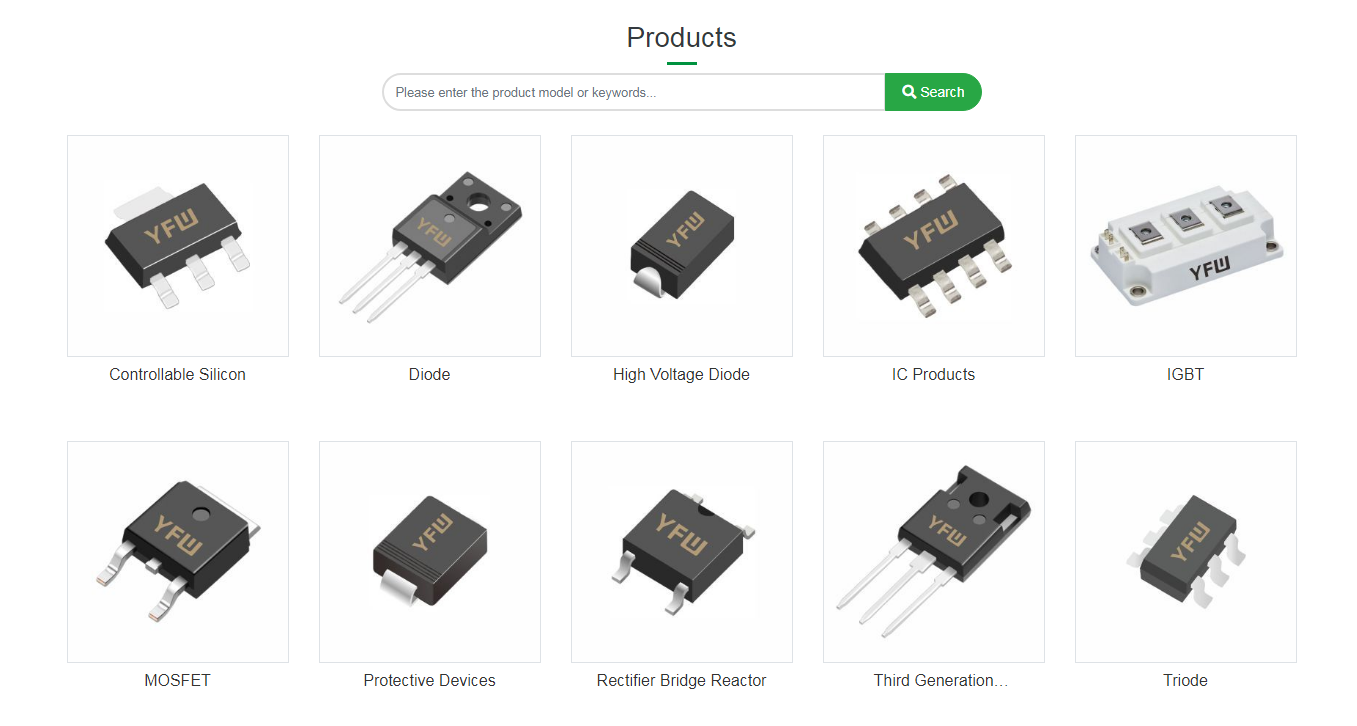Date:2025-03-18 Categories:Industry News Hits:910 From:Guangdong Youfeng Microelectronics Co., Ltd(YFW)
A transient voltage suppression diode, also known as a TVS diode, is an electronic device used to circuits from transient overvoltage effects. It is able to quickly conduct and absorb transient overvoltages in the circuit during operation, protecting other electronic components from damage. I. structure: A transient voltage suppression diode typically consists of a PN structure, which is very similar to the structure of an ordinary diode. However, unlike an ordinary diode a transient voltage suppression diode introduces an additional ion doping region between the transistor and the base. This additional doping region enables the transient voltage suppression diode to detect overvolt in the circuit and quickly conduct. II. Characteristics: A transient voltage suppression diode has the following characteristics: 1. Fast response speed: The transient voltage suppressionode can respond to transient overvoltages in the order of nanoseconds, protecting other electronic components from damage. 2. High breakdown voltage: The transient voltage suppressionode has a high breakdown voltage, capable of withstanding large transient overvoltages. 3. Low leakage current: The transient voltage suppression diode has a low leakage current normal working conditions, which does not affect the normal operation of the circuit. 4. High energy absorption capacity: The transient voltage suppression diode can absorb large amounts of energy, other electronic components from energy shocks. III. Working principle: The working principle of a transient voltage suppression diode is based on the Zener effect and the breakdown effect. the voltage is within the forward working range, its behavior is similar to that of an ordinary diode. However, when the voltage exceeds its threshold voltage (usually called the breakdown voltage, the transient voltage suppression diode will automatically conduct, forming a low-resistance path, and conducting the overvoltage to ground or other points of connection. In normal conditions, the transient voltage suppression diode is in a high-resistance state and will only conduct when the voltage exceeds a specific threshold. Once it conducts, its resistance will quickly to a very low level, allowing it to quickly absorb the overvoltage and guide it to ground. When the overvoltage disappears, the transient voltage suppression diode will automatically return to high-resistance state, waiting for the next overvoltage event. IV. Specifications: The specifications of a transient voltage suppression diode mainly include: 1.ated standoff voltage: The rated standoff voltage of a transient voltage suppression diode refers to the maximum forward voltage it can withstand. This value is usually given in the data sheet 2. Peak pulse current rating: The maximum pulse current that a transient voltage suppression diode can withstand, usually in amperes (A). This value is used to the diode's working capacity when it breaks down. 3. Peak pulse power dissipation: The maximum pulse power that a transient voltage suppression diode can withstand, usually ints (W). This value is used to evaluate the diode's energy absorption capacity when it breaks down. 4. Response time: The response time of a transient suppression diode refers to the time it takes to switch from the normal working state to the conducting state. The smaller this value, the better, indicating a faster transient suppression

Previous:What is a Bipolar Junction Transistor and its structure, and application fields?
Next:NZT560A 1A 80V SOT-223 Marked NZT560A Small Signal Transistor Y Micro Brand